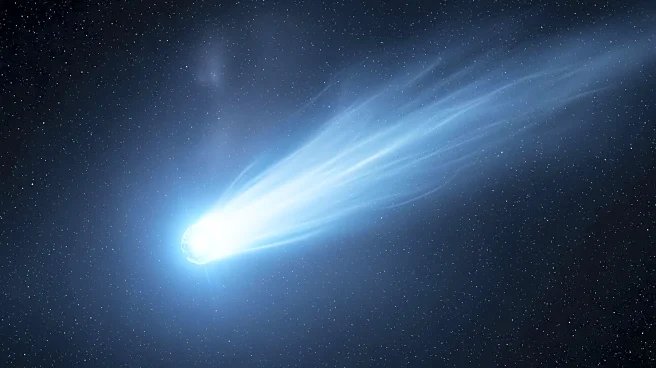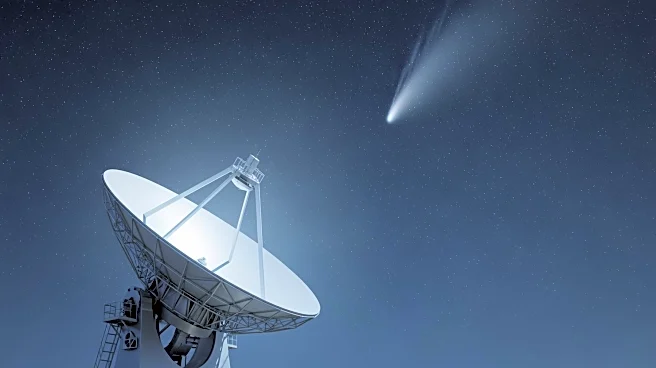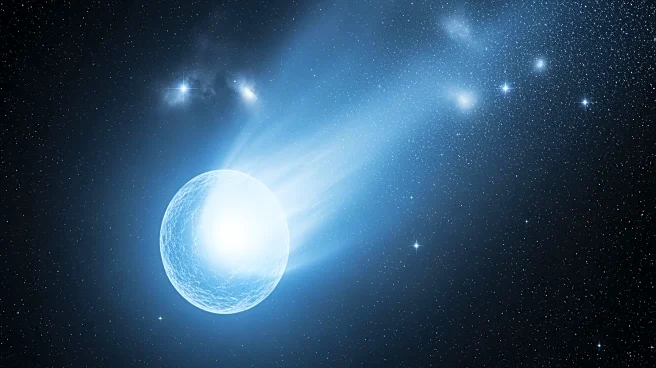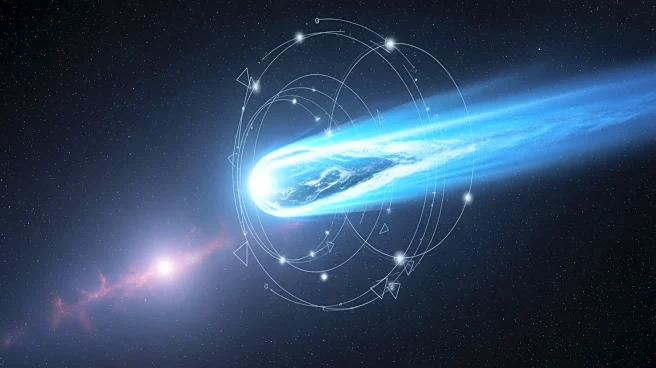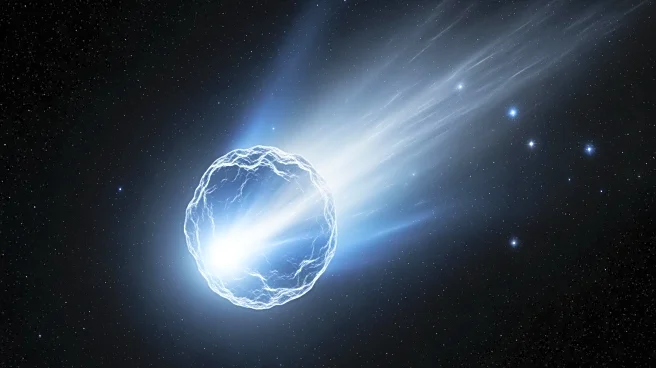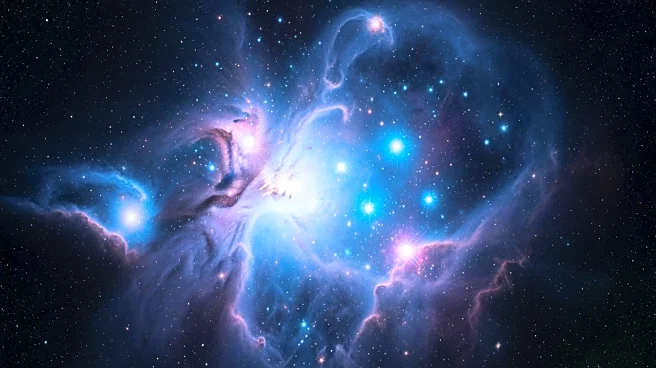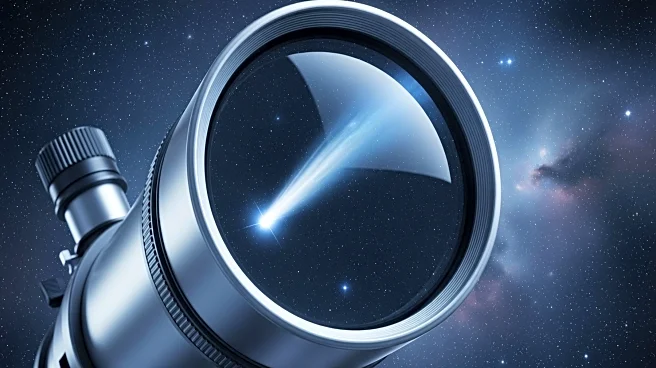What's Happening?
The Hubble Space Telescope has captured a detailed image of the spiral galaxy NGC 4535, located approximately 50 million light-years away in the constellation Virgo. Known as the 'Lost Galaxy' due to its
faint appearance through small telescopes, NGC 4535 is now clearly visible thanks to Hubble's advanced capabilities. The telescope's large mirror and position above Earth's atmosphere allow it to observe dim galaxies and reveal features such as massive spiral arms and a central bar of stars. The image highlights young star clusters within the galaxy's spiral arms, surrounded by glowing pink clouds known as H II regions. These regions indicate the presence of young, hot, and massive stars emitting high-energy radiation. The data is part of an observing program aimed at cataloging H II regions in star-forming galaxies, enhancing our understanding of the relationship between young stars and cold gas.
Why It's Important?
The observations made by the Hubble Space Telescope are crucial for advancing our understanding of galaxy formation and evolution. By studying galaxies like NGC 4535, scientists can gain insights into the processes that govern star formation and the lifecycle of stars. The presence of H II regions and young star clusters provides valuable information about the conditions necessary for star birth and the impact of massive stars on their surroundings. This research contributes to the broader field of astrophysics, helping to refine models of galaxy dynamics and the role of stellar winds and supernovae in shaping galactic environments. The findings have implications for understanding the universe's history and the mechanisms driving cosmic change.
What's Next?
Future observations by the Hubble Space Telescope and other missions will continue to explore galaxies like NGC 4535, focusing on the interactions between stars and interstellar gas. Researchers aim to expand the catalog of H II regions and study their distribution across different types of galaxies. These efforts will enhance our knowledge of star formation rates and the influence of galactic structures on stellar evolution. The ongoing analysis of data from programs like PHANGS will provide deeper insights into the connections between young stars and their gaseous environments, potentially leading to new discoveries about the universe's fundamental processes.
Beyond the Headlines
The study of galaxies such as NGC 4535 not only advances scientific knowledge but also raises questions about the nature of the universe and our place within it. The ability to observe distant galaxies and their star-forming regions challenges our understanding of cosmic scale and the interconnectedness of celestial phenomena. As technology continues to improve, the potential for discovering new aspects of the universe grows, prompting philosophical and ethical considerations about the pursuit of knowledge and the impact of space exploration on humanity's future.



